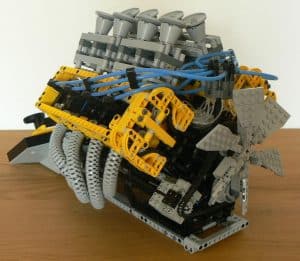
Modular subsystems in a wheelhouse technology may or may not be a staple in your industry. There are some industries where they are not a standard practice and there are industries where without them, you can’t be a competitor. Of course there is everything in-between.
First let’s define what a modular subsystem is for this discussion. A modular subsystem is an assembly that is designed to be integratable into multiple products. For the automotive industry this could be a transmission. Each car model a manufacturer makes does not have a unique transmission design. There may be six transmission types that cover 20 car models.
The transmission in the 4 door sedan is the same as used in the minivan and the sporty coupe.  For this to be effective the transmission must have standardized interfaces and translatable design metrics, including reliability by use case and environment.
For this to be effective the transmission must have standardized interfaces and translatable design metrics, including reliability by use case and environment.
What is required to have a modular assembly? It is the same as what is required to have a product that is sold to an outside customer. Effectively this is the same interface but with an internal customer, the new product team.
There are factors that are necessary to create a successful modular system. Many of these are obvious but I find sometimes that the ones associated to reliability are not clearly defined. From the reliability perspective it is clearly defined use-cases, environmental levels, and margins on failure to stress and variability. We can use the transmission example to expand on this.
A transmission has a standardized bell housing interface (motor mount) so motors can be designed without a specific transmission design in mind. Gear ratios, load capability, and controls interface all must be defined and indexed for selection. How about selecting a transmission for a vehicle that is ensured to satisfy the vehicles reliability goals without an extensive reliability test and analysis program? It is a poor use of resource for every vehicle that the  transmission is incorporated in to to have to do a full reliability program as if the transmission was a ground up design. The simple act of clearly defining a standardized set of use-cases, environment and stress margins to failure rate can ensure that a product program can select and incorporate a modular subassembly without having to fully qualify it from a reliability perspective.
transmission is incorporated in to to have to do a full reliability program as if the transmission was a ground up design. The simple act of clearly defining a standardized set of use-cases, environment and stress margins to failure rate can ensure that a product program can select and incorporate a modular subassembly without having to fully qualify it from a reliability perspective.
In the transmission case this may be a set of tables that indicate if the transmission is used in
- A 300 horsepower application for a non-towing vehicle under 5,000 lbs.
- Operates in a mixed season environment, on paved road.
- Has a use-life of 10 years with a reliability of 99.95% reliability.
This is the same kind of qualified reliability statement that would be expected if the transmission was purchased from an external supplier.
So why doesn’t this happen? I find that the number one reason this standardized indexed reliability program does not happen to modular systems intended for multiple applications is “separation”. The modular development program has to be separated from a higher level product development program. Under the pressure of a high level product development program, this case a vehicle, the first thing to be cut under schedule pressure will be the multiple use and environment cases in test and analysis that don’t apply to that specific vehicle. It makes sense. Why would a product program that is under schedule pressure (they all are) take time and resource to test and analyze use-cases that don’t apply to the product? The reliability team can’t defend allocating time to testing a transmission design for achieving  reliability goals when towing a 4,000 lb trailer if the vehicle doesn’t do that.
reliability goals when towing a 4,000 lb trailer if the vehicle doesn’t do that.
Put that energy that would have been consumed by a futal negotiation into a campaign to have an independent
development program for a modular system. This includes modular systems that already exist but have not had a comprehensive reliability program that permits them to be integrated across the applicable product lines without further repetitive reliability qualification.
-Adam
 Ask a question or send along a comment.
Please login to view and use the contact form.
Ask a question or send along a comment.
Please login to view and use the contact form.
Leave a Reply